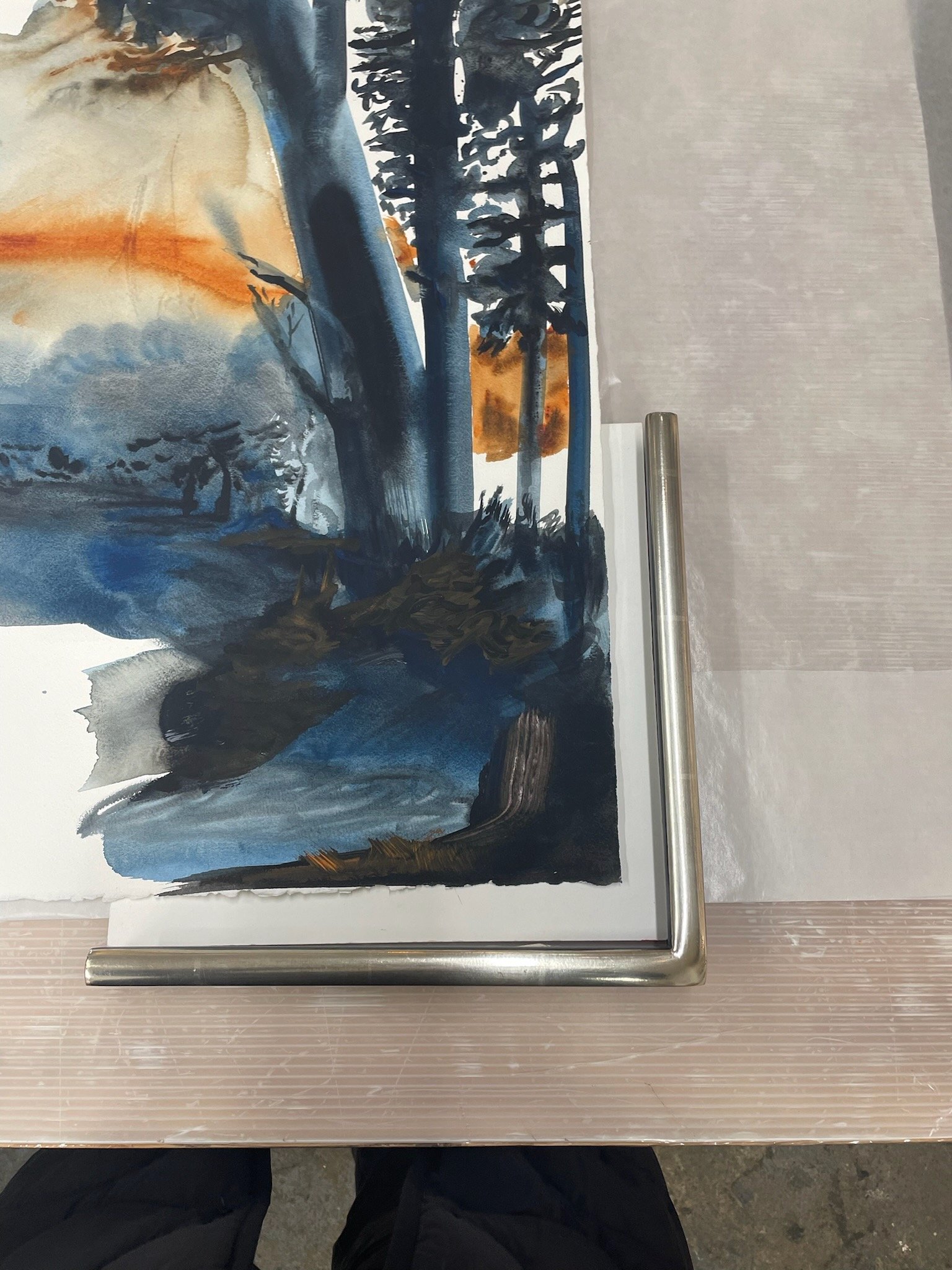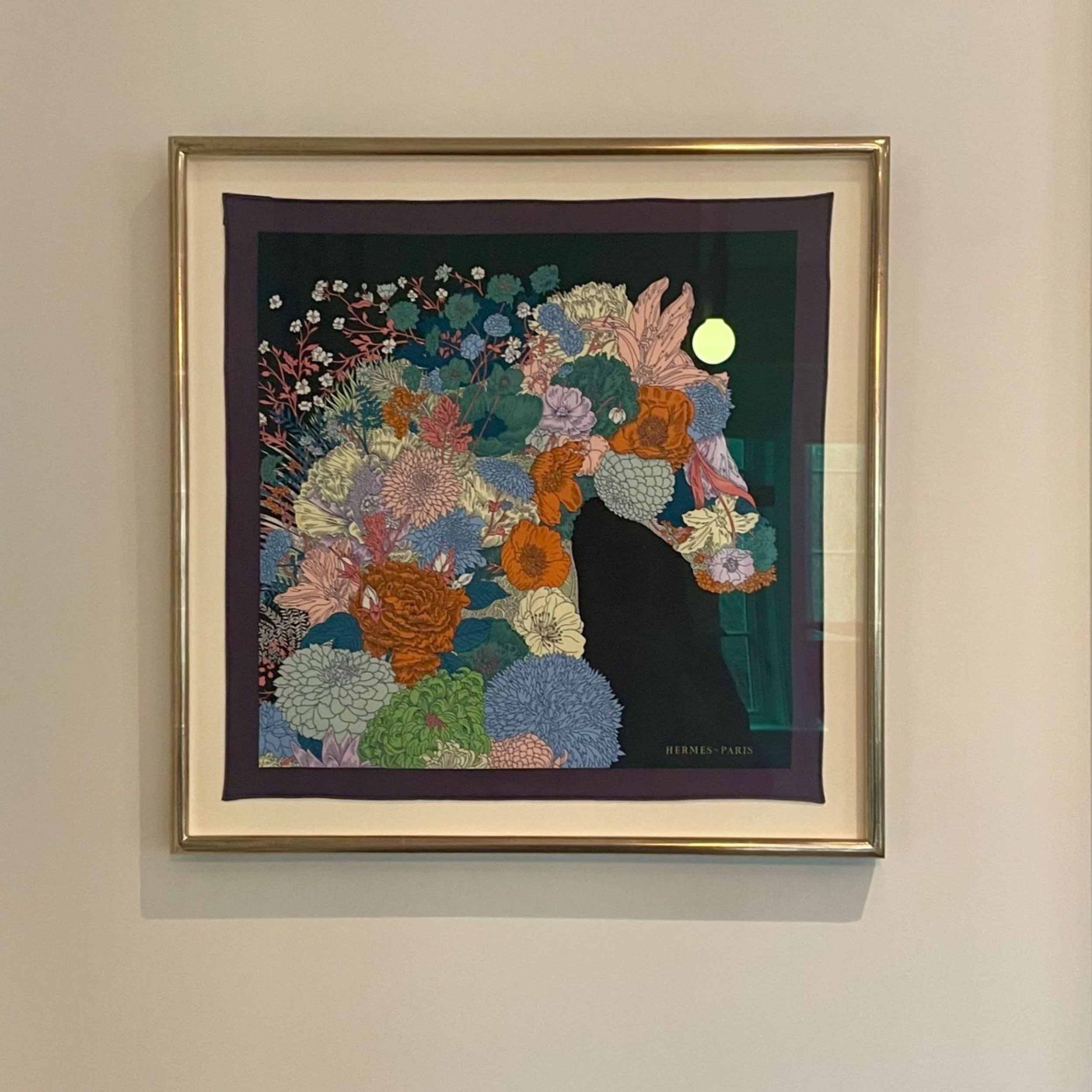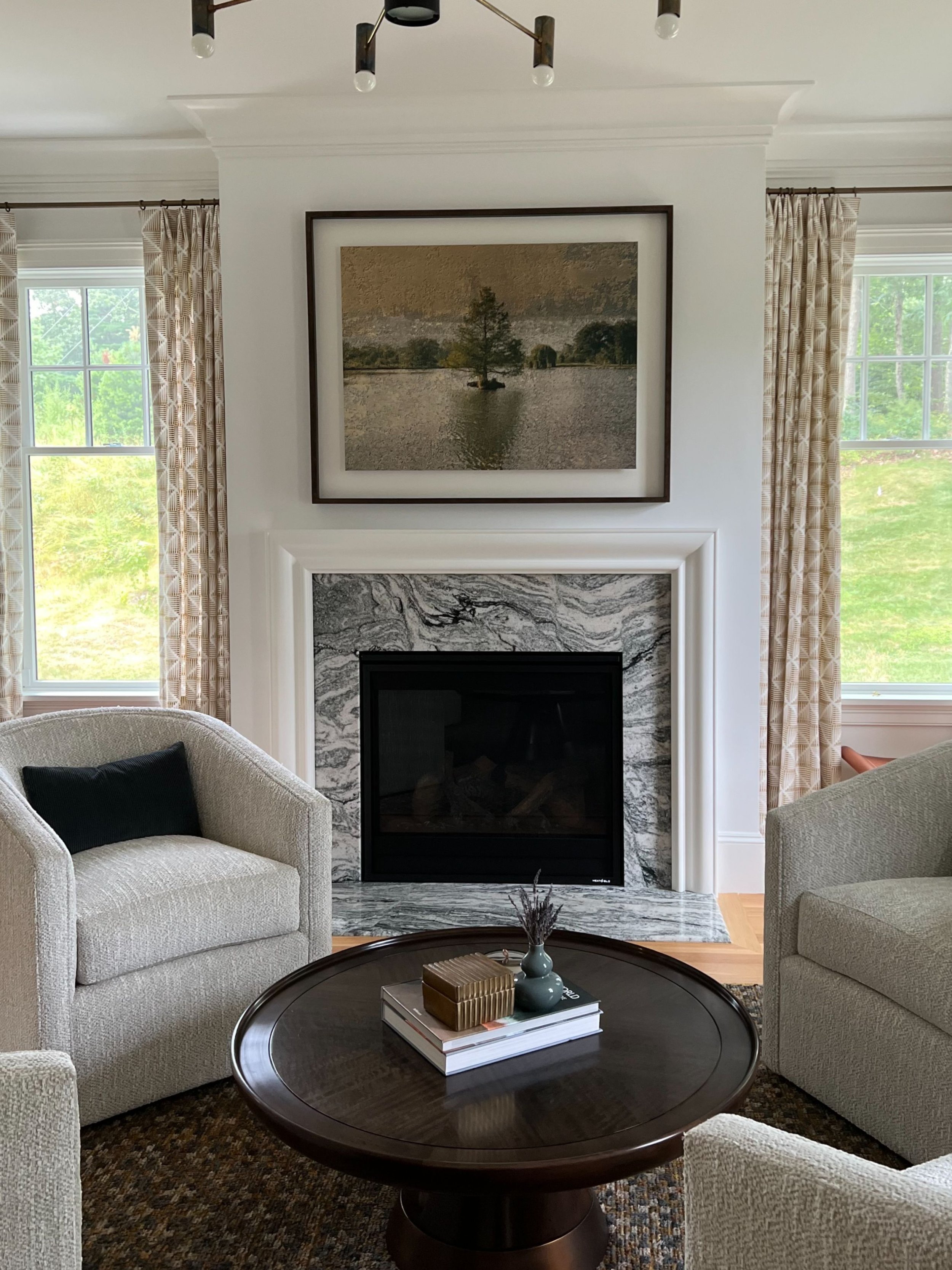Frame Consulting: Pipeline and Process
by Manuela Uribe
Framing is a major component of any art acquisition process, and for us advisors, it is often just as creatively stimulating as sourcing the artwork. When advising clients on purchasing works on paper, photography, fine art prints, or certain paintings on canvas, we always stress the importance of paying equal attention and consideration to the frame. From a conservation standpoint, a high quality frame will ensure the artwork is well protected and safely housed to stand the test of time. From an aesthetic perspective, the frame is the final component to finish off an artwork and can have a huge impact on its overall appearance.
Option 1
Option 2
Suzy Spence, Dodge Road, flashe and acrylic on paper, 22 x 30 in., 2021
Final Selection | Option 2: Swan frame with Black outer edge and White Gold inner edge, float on white matboard with Museum Optium glazing.
The framing process comes with its own set of functions and tasks, and we’ve developed an internal pipeline to ensure a seamless and straightforward experience. Once a client has acquired an artwork that requires framing – be it a work on paper or a painting on canvas that would benefit from a frame – we immediately begin looking at frames. Often this process starts as early as the art viewing at the client’s home; by bringing a set of frame corners along with the consigned artwork, we’re able to review framing options on-site with the client and take into consideration the home interiors and finishes while making selections.
There are several considerations to keep in mind when reviewing frames. First and foremost is the look of the frame, as we want to ensure our suggestions complement both the artwork and the space where it will be installed. This involves a slew of decisions like determining the profile and finish of the frame, how the artwork will be mounted (floated, overmatted, edge to edge, etc.), the color of the matboard, and the size of margins around the artwork, if any. Often, there are also practical questions that can be addressed through framing; do we want the artwork to appear significantly larger in order to better fill up a wall? Is it going to be placed in a sunlit room where glare might be an issue? Are the edges of the work in a presentable condition, or should they be concealed by the frame or a matboard?
Hermès Scarf
Moon Gold with Red Rub - Black, float on Antique White matboard with Museum Optium glazing.
Once we’ve pulled together a few different framing options for each artwork, and quoted them out with our framer, we consolidate images of the frames and respective costs into a presentation which is then sent to the client. As soon as a frame is approved, we communicate with the framer to put it into production and get a sense of timeline. During subsequent weeks, we will periodically check in with the framer to monitor the status of the frame, and begin arranging aftercare – delivery or installation – accordingly.
The final step in our framing process is to inspect frames for quality control. While framers generally send us images of completed frames, we make it a point to inspect them in person in order to get a closer look and ensure that they’re up to standard. Although we rarely encounter any issues, we feel most secure when we’re able to sign off on a frame before it’s sent off to a client or scheduled for an installation.
Regardless of its complexity, we find that a well-made and tastefully selected frame always adds impact and presence to an artwork. With a range of styles available – from traditional gilded designs, to elaborate carved models, to classic modern profiles – frames can be so much more than merely vessels to hold an artwork, and the framing process can in fact be another outlet for creative expression when acquiring art. While the initial purchase of art is certainly rewarding, we generally see the most enthusiasm from clients later in the process, once they see their artwork framed and installed.
Michael Eastman, Trees Series, archival pigment print composite image, 30 x 40 in.
Flat profile in Cherry with Trans Ink finish, mounted to Dibond, float with Museum Optium glazing.








